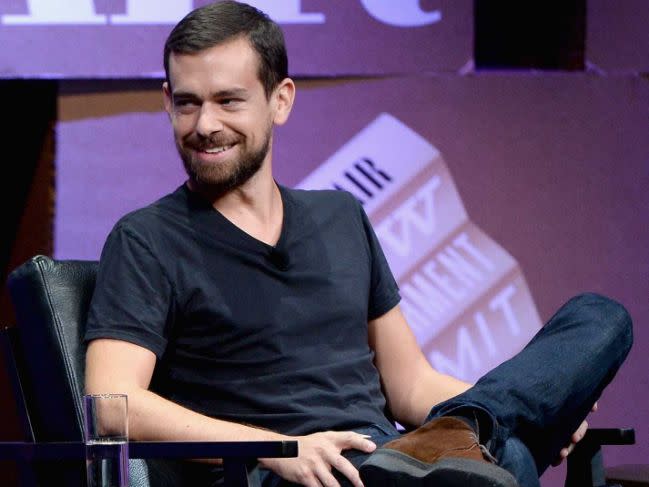Twitter keeps innovating but isn't fixing these core problems

Twitter might have had one of its best nights ever on Wednesday. An intense Game 7 of the World Series that ended with the Chicago Cubs winning it all for the first time in 108 years was just the sort of shared real-time experience that the social network was made for.
But that night comes in the middle of a season that has to rank as one of the worst ever for company. Not only has Twitter’s stock (TWTR) slumped, potential deep-pocketed acquirers also passed on a deal apparently because the network too often a cesspool of abuse. On top of that, the company announced that it’s sacking 9% of its employees and shuttering its quirky Vine video-sharing service.
It’s enough to make Twitter regulars fret over what’s going to become of the service. And looking at where it’s directing its energies these days, they might be right.
What Twitter’s doing
Just because Twitter is killing Vine doesn’t mean Twitter sees no future in video — it just doesn’t seem interested in video from you, its users.
Instead, it’s betting on expanding its audience by streaming name-brand content, starting with carrying 10 NFL games this season as well as the presidential debates. And it’s shipped a round of video apps for the big streaming media players, including one for the revamped Apple TV.
If, however, you go to Twitter to tweet, or just to laugh at other people’s tweets, change is harder to find. The most obvious recent changes have been not counting attached media files against the traditional 140-character limit and allowing people to retweet themselves.
The former makes it easier to share pictures and GIFs, but the latter doesn’t exactly solve Twitter’s signal-to-noise problem.
Twitter announced those moves back in May, but another big change advertised then — not counting people’s usernames when you reply to their tweets — has yet to escape testing. Users who have encountered it have not been pleased, complaining that tweets involving multiple people now show only the last person added to the conversation.
I have yet to be graced with that test feature, but I am among those users who opted into a different test that Twitter doesn’t seem to have announced: When you tap a link in its iOS app, it opens in Safari’s stripped-down Reader Mode.
This means I don’t see the occasional annoying ad but also subjects me to a plain-text version of sites that often strips out such basic content as the video accompanying a story. Sometimes the page comes up blank. Well over half the time, I find myself reloading the page to see what I’ve missed.
What it could and should do instead
Twitter’s to-do list should start with giving users better tools to deal with abuse. Its options have advanced considerably compared to two years ago and have drawn measured compliments from people who have had to endure torrents of death threats, even as Twitter often still fails to enforce its own rules.
But Twitter’s anti-abuse features continue to emphasize blocking or otherwise punishing particular people instead of impeding abusive patterns of behavior. And as a look at other online communities should show, you have to look at what sort of conduct the machinery of a social network invites.
For example, Twitter has begun testing an option that will let you mute all tweets containing certain words. That might be helpful if 30 years of battling spam hadn’t taught everybody else in computing that the bad guys know how to use a thesaurus too.
What would be more helpful would be the simple option of muting a thread in which you’ve been mentioned — having its original tweet endlessly retweeted, quoted and liked can amount to a denial-of-service attack on your attention span. Students of Twitter’s abuse problem have been asking for that for years, along with the option to block new Twitter accounts; we are all still waiting.
Where would we go?
When you look at Twitter’s continued inattention to these issues and other parts of its core experience — like the username autocomplete that struggles to find a match when Twitter’s search doesn’t, the way the desktop web interface can suck down memory on a Mac, the excessive number of taps it takes to get to your drafts in the Android app — it can be tempting to think that if Twitter tanks, we ultimately won’t miss it.
I’m not too sure of this. Where else would we go? Facebook, where you’d have to surrender some of your profile’s privacy to use it for this kind of public conversation? Google Plus, where you can spend even more of your time in the orbit of the Web giant?
Twitter sits at a rare combination of circumstances — it’s not the property of either the dominant social network or the dominant search engine, it’s a profoundly mobile-friendly service, and its brevity makes it easy to scan and brings out some of the most creative work I’ve seen online. The reasons I jumped on it relatively early still apply. And if it stopped existing, I imagine we’d need to invent something like it to talk about its passing.
More from Rob:
Hackers are taking over your smart devices, here’s how we can stop them
How hackers could use your smart home devices to launch web attacks
How the government plans to make your self-driving car safer
Email Rob at [email protected]; follow him on Twitter at @robpegoraro.
